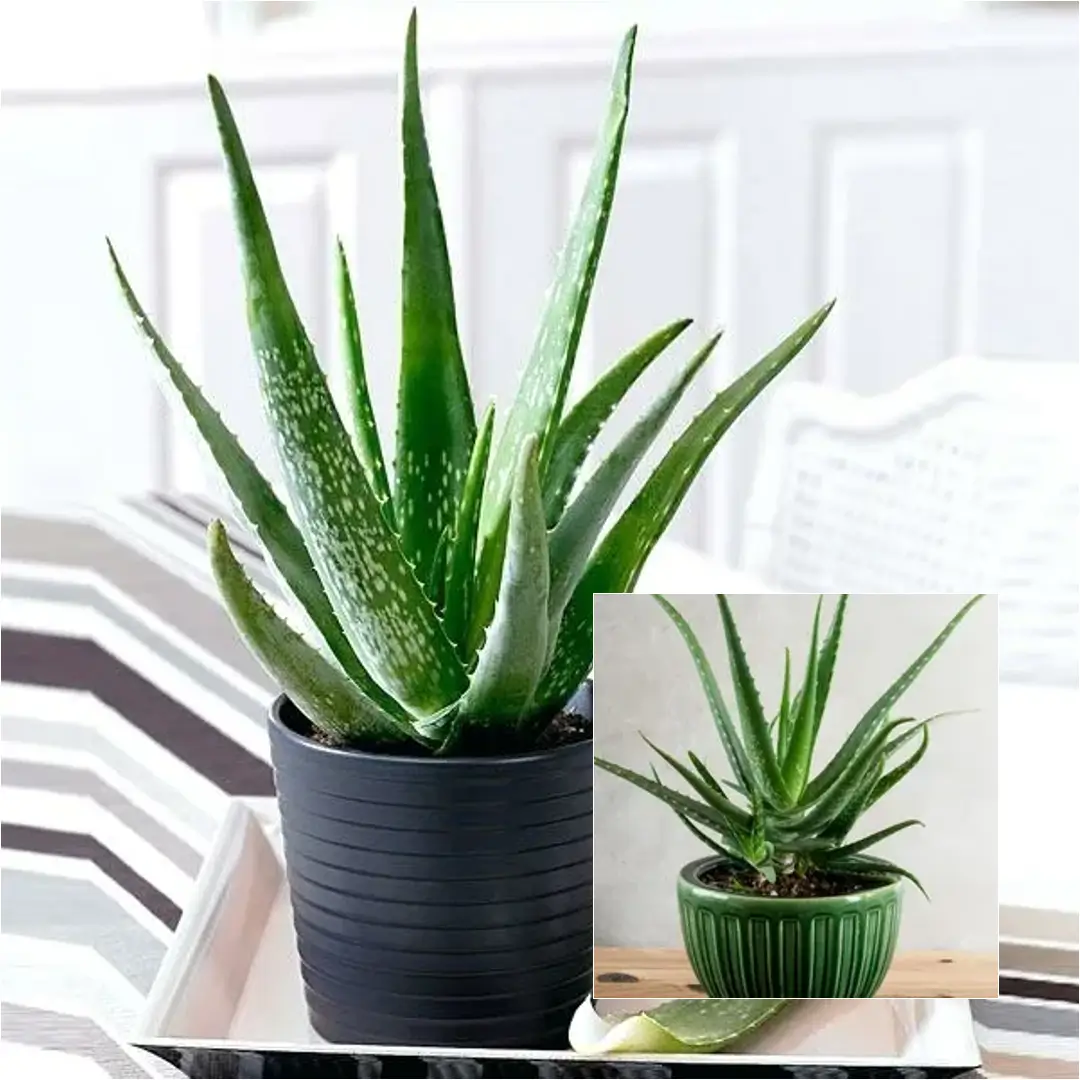To effectively care for an aloe plant, particularly the popular Aloe vera, is a delightful addition to any home, providing both aesthetic appeal and medicinal benefits. With their succulent leaves and easy-care nature, these plants are perfect for both novice and experienced gardeners. In this comprehensive guide, I’ll share everything you need to know about how to care for an aloe plant, ensuring it thrives in your space. So, let’s dig in!
Fast Facts on Aloe Vera Plants
Before we jump into the nitty-gritty of aloe plant care, here are some quick facts to get you acquainted with these fascinating plants:
- Common Name: Aloe vera
- Scientific Name: Aloe barbadensis
- Native Climate: Southern and eastern Africa
- Light Level: Bright, indirect sun
- Average Mature Height: 1–2 feet tall
- Soil Type: Well-drained commercial potting mix
- Frequency of Watering: 1–2 times weekly
- Toxicity: Nontoxic to humans; mild to moderate for cats and dogs
- Ideal Humidity Level: Dry
With these basics in mind, you’re well on your way to becoming an aloe plant aficionado!
The Essential Care Guide for Aloe Plants
Light: The Sunshine Essential
One of the key aspects of how to care for an aloe plant is ensuring it receives the right amount of light. Aloe plants thrive in bright, indirect sunlight, so placing them in a sunny kitchen window is a fantastic idea. Just remember, if you’ve been keeping your aloe indoors, don’t suddenly plop it into direct sunlight; that can lead to sunburn! Instead, gradually acclimate your plant to the brighter light.
If your home doesn’t get enough natural light, don’t fret! You can supplement with grow lights. Just be sure to give your aloe a break by moving it to a dark room or closet for part of the day. This balance is essential for your plant’s health and growth.
Watering: Less is More
Aloe plants are succulents, which means they’re champions at conserving water. In terms of how to care for an aloe plant, watering is crucial. Typically, you’ll want to water your aloe about once a week. However, if you live in a hot, dry climate, you may need to step it up to twice a week. The key is to ensure the soil is completely dry before you water again.
When you do water, be generous! Give your aloe plant a deep drink, allowing the moisture to soak through the roots. This approach encourages deep root growth and a robust plant.
Soil: The Foundation of Health
Next on our list of how to care for an aloe plant is choosing the right soil. Aloe plants prefer well-draining soil, so regular gardening soil isn’t the best option. Instead, look for a commercial potting mix specifically designed for succulents or make your own by mixing equal parts sand, peat moss, and perlite.
And don’t forget about the pot! It should have drainage holes to prevent water from sitting at the bottom, which can lead to root rot. A terra cotta pot is an excellent choice because it helps wick away excess moisture.
Temperature: Keep It Cozy
Aloe plants enjoy warmth, so aim to keep them in temperatures between 55°F and 85°F. If your aloe is exposed to cold drafts—like from frequently opened doors or windows—it may start to show distress, such as yellowing leaves or puckering.
Maintaining a consistent temperature is crucial for ensuring your aloe thrives. So, if winter approaches, consider moving your plant indoors if it’s typically kept outside.
Fertilizing: Feed Sparingly
When it comes to fertilizing, less is more! Aloe plants are not heavy feeders, so they don’t need frequent fertilization. In fact, over-fertilizing can harm your aloe. The best time to fertilize your aloe is in the spring before new growth begins. You can use a standard houseplant fertilizer or a specific succulent fertilizer, but always dilute it to half-strength to avoid overwhelming your plant.
Pruning: Trim for Health
Regular pruning is essential for maintaining your aloe plant’s health. When you notice the tips of the leaves turning brown and brittle, it’s time to step in. Use your fingertips to pluck these off. For a more thorough trim, start by cutting the older growth, then move on to the fleshy parts, leaving the center leaves intact. This strategy ensures that your aloe can still absorb sunlight effectively.
Potting or Repotting: Getting Comfortable
When it’s time to pot or repot your aloe plant, here’s a simple process to follow:
- Choose a pot: Opt for a wide, shallow pot with drainage holes.
- Prepare the soil: Fill the pot with well-draining potting mix.
- Plant it: Gently remove the aloe from its current pot and place it in the new one.
- Water it: Give your plant a deep drink and place it in a sunny location.
Propagation: Sharing the Love
If you want to multiply your aloe plants, propagation is easy! Aloe plants produce offsets, also known as pups, that can be removed and replanted. To propagate your aloe:
- Remove the pup: Carefully twist it off the mother plant, ensuring you get as much of the root system as possible.
- Let it callous: Allow the pup to dry out for a few days to form a callous over the cut area.
- Repot: Place the pup in a well-draining cactus mix.
With just a little patience, you can enjoy multiple aloe plants thriving in your home!
Common Issues and Solutions
While aloe plants are generally easy to care for, you may encounter a few issues along the way. Here are some common problems and how to address them:
Overwatering: A Common Pitfall
One of the most significant mistakes in how to care for an aloe plant is overwatering. If you notice your aloe’s leaves turning brown or yellow and feeling mushy, it’s a sign of overwatering.
Solution: Allow the soil to dry out completely. If the roots appear rotted, trim away any dead sections and repot the plant in well-draining soil.
Insufficient Light: A Dim Situation
If your aloe isn’t getting enough light, it may begin to sag and stretch, a condition known as etiolation. This will cause the leaves to lose their vibrant green color.
Solution: Move your aloe to a sunnier location, but be cautious of direct sunlight, which can cause burns.
Overwintering: Preparing for Cold Weather
For those of us living in colder climates, knowing when to stop watering is vital. In USDA Hardiness Zones 10-12, you’ll want to stop watering your aloe during winter and bring it inside before the first frost.
Pests and Diseases: Stay Vigilant
Aloe plants can attract pests like mealybugs and spider mites. If you notice signs of pest damage, wash the leaves with water and consider using a powdered fungicide.
Recommendations for Successful Aloe Care
To wrap up this comprehensive guide on how to care for an aloe plant, here are some final recommendations:
- Soil: Always allow the soil in your pot to dry out before watering again.
- Watering: Only water when the leaves show signs of wilting or if the soil is dry at least 1 inch below the surface.
- Lighting: Ensure your aloe receives adequate light—too much or too little can impact its health and growth.
By following these guidelines, you can enjoy a thriving aloe plant that brings beauty and medicinal benefits to your home.
Caring for an aloe plant is not just about keeping it alive; it’s about fostering a healthy, vibrant member of your indoor garden. With the right light, watering routine, soil, temperature, and occasional pruning, your aloe will flourish. Remember, these plants are forgiving and adaptable, making them perfect for anyone looking to dip their toes into the world of indoor gardening. So grab your pot and soil, and start enjoying the many benefits of how to care for an aloe plant today!
With these tips, you’ll not only have a thriving aloe plant but also a green companion that’s sure to impress!
FAQs
How do you take care of an indoor aloe plant?
To take care of an indoor aloe plant, ensure it receives bright, indirect sunlight, and water it about once a week, allowing the soil to dry out completely between waterings. Use a well-draining potting mix and repot as necessary to prevent root rot. Fertilize sparingly in the spring and prune any dead or brown leaves to maintain its health.
Do aloe plants need direct sunlight?
Aloe plants prefer bright, indirect sunlight. While they can tolerate some direct sunlight, too much can lead to sunburn on the leaves. It’s best to place your aloe near a window where it can receive filtered light.
Should I cut the brown tips off my aloe plant?
Yes, you should cut the brown tips off your aloe plant. This helps maintain the plant’s appearance and overall health. Use clean scissors to trim the dead tips, being careful not to remove healthy green leaves from the center of the plant.
How do I know if my aloe plant is dying?
Signs that your aloe plant may be dying include yellowing leaves, mushy or browning areas, and wilting. If the leaves are drooping or the plant has a foul smell, these may indicate overwatering or root rot. It’s essential to assess the watering routine and provide the right conditions to revive your aloe.


